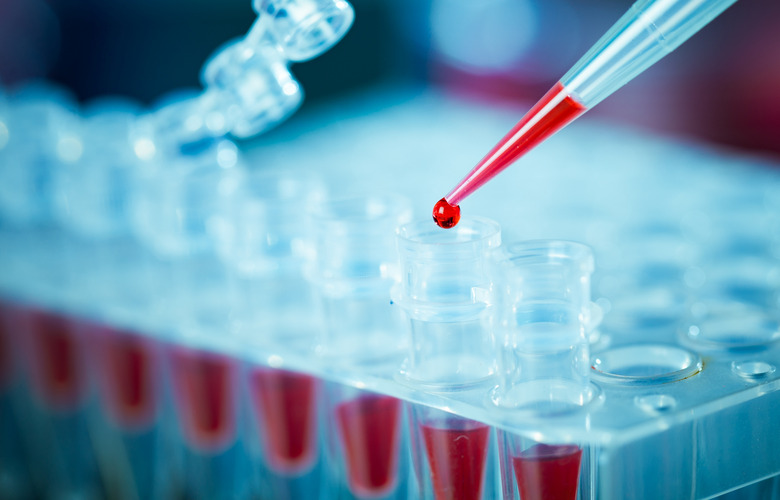What Is The Function Of A Tris Buffer In DNA Extraction?
Tris, or tris(hydroxymethyl) aminomethane, is a common biological buffer, used throughout the DNA extraction process. During extraction from any number of sources, DNA is pH sensitive. During cell lysis, removal of unwanted cellular components and precipitation, tris is used to maintain a stable pH. Additionally, it plays a particularly important role in cell lysis.
TL;DR (Too Long; Didn't Read)
DNA extraction is a pH-sensitive process, and using a tris buffer helps keep the pH stable over cell lysis and extraction.
Tris as a Buffer
Tris as a Buffer
As pH can influence and be influenced by a number of cellular factors, maintaining a stable pH is essential to experimental science. Biological buffers, like tris, are important because they can maintain a stable pH despite influences that might otherwise shift the pH. Tris(hydroxymethyl) aminomethane, with a pKa of 8.1, is an effective buffer between pH 7 and 9. Because of its neutral range, tris is a commonly used buffer in biological labs. However, tris buffer is temperature sensitive and should be used at the temperature at which it was originally pHed to avoid inaccuracy.
Lysis of Cells
Lysis of Cells
Lysis, or breaking open the cells, is the first step of DNA extraction. This is accomplished by a buffer containing tris and EDTA (ethylenediaminetetraacetic acid). EDTA binds divalent cations such as calcium and magnesium. Since these ions help maintain the integrity of the cell membrane, eliminating them with EDTA destabilizes the membrane. Tris is the main buffering component; its chief role is to maintain the pH of the buffer at a stable point, usually 8.0. Additionally, tris likely interacts with the LPS (lipopolysaccharide) in the membrane, serving to destabilize the membrane further.
Tris Protects the DNA from pH Shifts
Tris Protects the DNA from pH Shifts
When the cells are broken apart, their DNA and contents spill into the buffer. Additionally, RNase A (destroys RNA), proteases (destroys proteins), and SDS (sodium dodecyl sulfate, solubilizes the membrane fragments) are often included. Taken together, this soup of cellular contents and fragmented RNA and proteins can have a big impact on the pH of the solution. Because DNA is pH sensitive, it is important for tris to buffer the soup and maintain the pH at a steady point.
DNA Precipitation
DNA Precipitation
In the final stage of DNA extraction, the DNA itself is extracted from the solution. At this point, the DNA is soluble in the buffer. To extract from the solution, the DNA is made insoluble by adding ethanol or isopropanol (isopropyl alcohol). When this is done, the DNA become obvious in solution as a white thready substance. Although DNA may be isolated from the remaining cellular components in this way, it is not "usable" when it is insoluble. After isolation, the alcohol is removed, and DNA must be returned to a biological buffer, like tris, to be used.
Do It Yourself
Do It Yourself
Although extraction of DNA is commonly done in research labs generally using one of a number of commercially available kits, anyone can do DNA extraction at home using common household items and green peas or spinach. In this case, tris, nor any biological buffer, is not present to protect the DNA from pH shifts. However, it is a visual way of helping students to connect with cellular DNA.
Cite This Article
MLA
Tan, Dr. Alex. "What Is The Function Of A Tris Buffer In DNA Extraction?" sciencing.com, https://www.sciencing.com/function-tris-buffer-dna-extraction-6370973/. 23 April 2018.
APA
Tan, Dr. Alex. (2018, April 23). What Is The Function Of A Tris Buffer In DNA Extraction?. sciencing.com. Retrieved from https://www.sciencing.com/function-tris-buffer-dna-extraction-6370973/
Chicago
Tan, Dr. Alex. What Is The Function Of A Tris Buffer In DNA Extraction? last modified March 24, 2022. https://www.sciencing.com/function-tris-buffer-dna-extraction-6370973/
